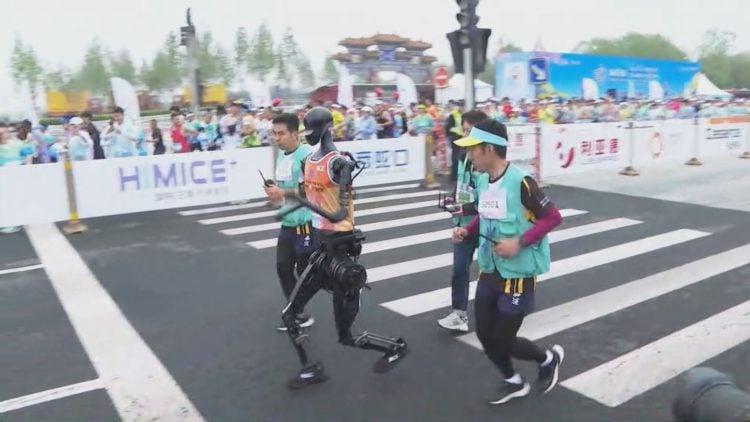The ancient Italian art of spinning ‘sea silk’ is all but lost, save for one woman who still knows how to produce the incredibly rare, almost magical fabric. While modern silk is spun from silkworms, Chiara Vigo can harvest the saliva of a rare variety of clam and spin it into a shiny, gold-like material called byssus.
Legend has it that byssus was the cloth that God instructed Moses to lay on the first altar. It is believed to be the finest fabric known to Egypt, Greece, and Rome. If treated properly with lemon juice and spices, the remarkable material shines when exposed to the sun. It is also incredibly light, so much so that the wearer cannot even feel it touching the skin. It is said to be as thin as a spider web, resistant to water, acids, and alcohols.
Vigo gathers the raw material required to weave the cloth every spring – she goes out diving early in the morning to cut the solidified saliva of a large clam, the Pinna Nobilis, an endangered fan-shaped species of mollusc that is native to the Mediterranean Sea bed. Vigo has mastered a special cutting technique that allows her to take the secreted material without killing the rare creature. 300 to 400 dives later, she is able to gather about 200 grams of material.
Once she has the material ready, she starts the weaving process at her studio, the Museum of Byssus, on the Sardinian island of Sant’Antioco. She begins by leaving the material to soak in a mixture of eight seaweeds. When it is dry, she combs it with a wool card and twists the fine filaments together with a spindle made of oleander, to form the gilded thread. She spins the yarn several times to strengthen it, so it can be used in the loom and woven into fabric that lasts for thousands of years, immune to destruction by moths or fire.
According to Vigo, the art form was born 10,000 years ago in the ancient Middle East, and was brought to Sant’Antioco by Princess Berenice, the great-granddaughter of Herod the Great, during the second half of the First Century. “The Bible itself mentions indirectly the byssus,” she told Angela Corrias, a travel writer for Go Nomad. “Remember when it says that King Solomon appeared “shining” in public? Why do you think that is? He was wearing byssus-made clothes, that in the dark appear brown, but once in the light, they shine like gold.”
Gabriel Hagai, a professor of Hebrew Codicology at the Eagle Pratique des Haute Etudes in Paris, says that Vigo is “the last remnant” of the unique craft. “I met Chiara through a fellow professor in Paris, and I was sceptical at first,” he told BBC. “This craft combined folklore and religion [but] she has allowed us to reconstruct a forgotten and missing part of our history.”
Indeed, Vigo does treat her craft as an extension of her religious beliefs. She prays twice a day at a deserted cove on the island. “You have to be respectful to the place you live in,” she said. “You are just passing by, these places are here to stay. And the sea has its own soul and you have to ask for permission to get a piece of it. I pray for what has been and what will be.”
Vigo’s pieces are displayed in museums in Rome, London, New York and Paris, and have been gifted to presidents and popes. Each piece is estimated to be worth hundreds of thousands of dollars. But surprisingly, she does not accept any money in exchange for the material that she so painstakingly produces. “It would be like commercializing the flight of an eagle,” she says. “The byssus is the soul of the sea. It is sacred.” The fabric is actually believed to bring good fortune and fertility, so she gives the fabric away for free to all the people who approach her for help. “Before it was emperors [who wore byssus], now it is young women and newlywed couples. I weave for outcasts, the poor, people in need.”
Vigo, who learned the dying art of weaving byssus from her grandmother, said: “Weaving the sea silk is what my family has been doing for centuries. The most important thread, for my family, was the thread of their history, their tradition.” But no one in her family has ever made a penny from it. Vigo and her husband live on his pension and occasional donations made by generous passersby.
Apparently, no one in history has been able to commercialize the weaving of byssus, which is probably why it’s a forgotten art. Evangelina Campi, a professor of Italian history, revealed that a number of women were skilled with the byssus up until the Mussolini era. Some of them even tried to set up a business and make money from it. “The factory ran out of business in three months,” she said. “This is a thing you cannot profit on. Strangely, something bad has happened to people who wanted to manufacture byssus on a large scale in the past. It’s like God sending a message.”
A few elderly women in the region of Apulia are believed to know how to weave sea silk, but Vigo is the only person in Italy who regularly harvests and produces the fabric. She also spends her evenings passing on the art to those who are interested. Her daughter, a student in northern Italy, intends to follow in her footsteps. “Although I will leave very little to her, she will have to continue this tradition,” Vigo said. “So humankind can benefit from it.”
Photos: Chiara Vigo/Facebook










